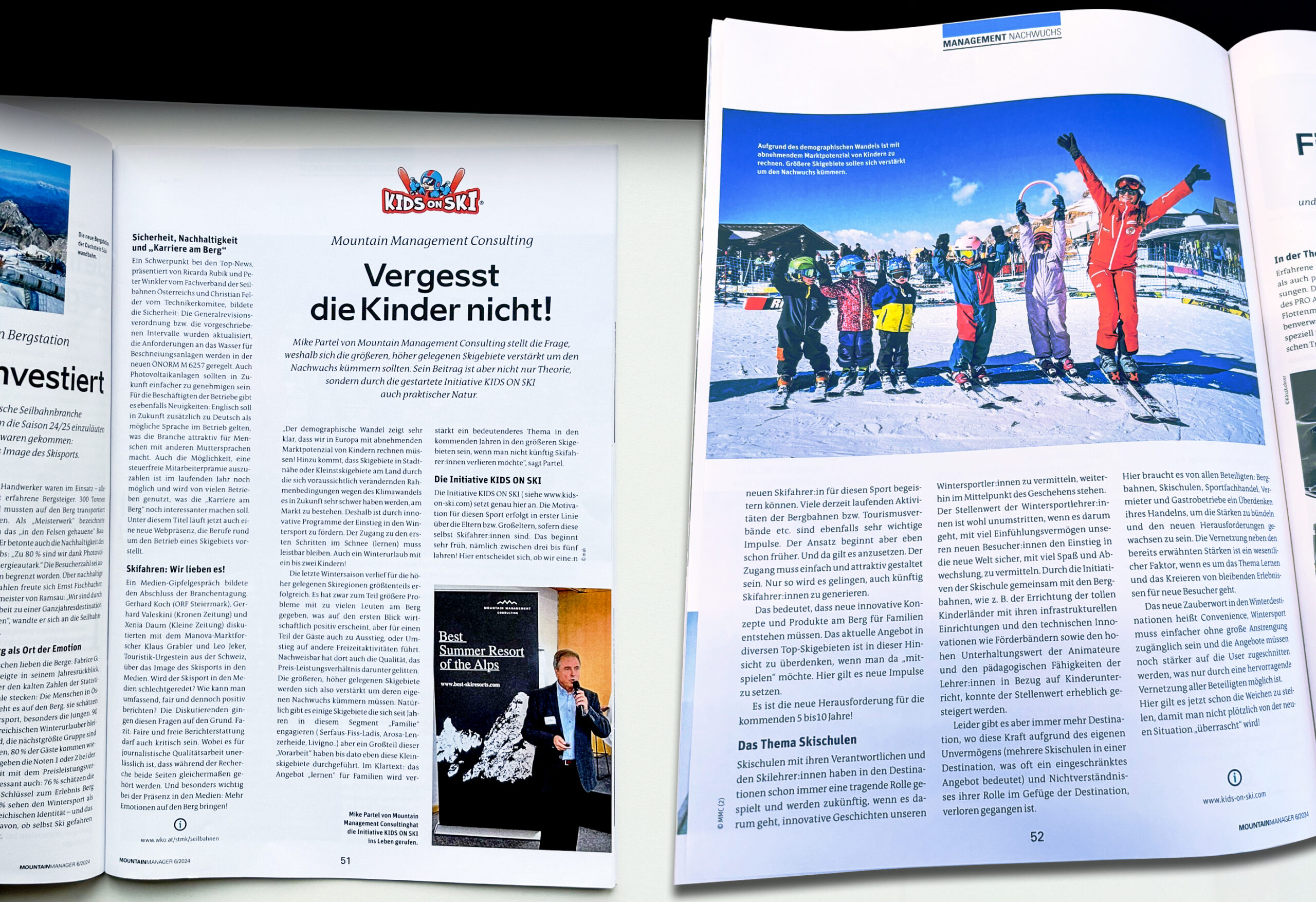Safety, sustainability, and “careers in the mountains”
One focus of the top news items, presented by Ricarda Rubik and Peter Winkler from the Austrian Cable Car Association and Christian Felder from the Technical Committee, was safety: the General Inspection Ordinance and the prescribed intervals have been updated, and the requirements for water for snow-making systems are regulated in the new ÖNORM M 6257 standard. Photovoltaic systems are also to be approved more easily in the future.
There is also news for employees in the industry: in future, English will be accepted as a possible working language alongside German, making the industry more attractive to people with other native languages. The option of paying tax-free employee bonuses is also still available this year and is being used by many companies to make a “career in the mountains” even more appealing.
This title is now also used for a new website that presents professions related to the operation of a ski resort.
Skiing: We love it!
A media summit discussion concluded the industry conference. Gerhard Koch (ORF Steiermark), Gerhard Valeskini (Kronen Zeitung), and Xenia Daum (Kleine Zeitung) discussed the image of skiing in the media with Manova market researcher Klaus Grabler and Leo Jeker, a veteran of the Swiss tourism industry. Is skiing being given a bad rap in the media? How can reporting be comprehensive, fair, and yet positive? The panelists explored these questions in depth. Their conclusion: fair and free reporting can also be critical. For quality journalism, it is essential that both sides are heard equally during research. Particularly important for media presence: bring more emotion to the mountains!
“Demographic change clearly shows that we in Europe must expect declining market potential among children. In addition, ski resorts near cities or small ski resorts in rural areas will find it very difficult to survive in the market in the future due to the changing conditions caused by climate change. That is why innovative programs must be used to promote entry into winter sports. Access to learning the basics in the snow must remain affordable, even for a winter vacation with one or two children!”
The last winter season was largely successful for the higher-altitude ski regions. Although there were some major problems with too many people on the mountains, which at first glance seems positive from an economic perspective, this can also lead some guests to stop skiing or switch to other leisure activities.
The larger, higher-altitude ski resorts therefore need to focus more on attracting young talent. Some ski resorts have been actively involved in this segment for years.
The KIDS ON SKI initiative
The KIDS ON SKI initiative (see www.kids-on-ski.com) addresses precisely this issue. Motivation for this sport comes primarily from parents or grandparents, provided they are skiers themselves. This starts very early, between the ages of three and five! This is when we decide whether we can get a child excited about this sport. Many of the activities currently being carried out by mountain railways and tourism associations are also very important incentives. However, the approach starts even earlier, and this is where we need to start. Access must be made easy and attractive. This is the only way to attract new skiers in the future.
This means that new, innovative concepts and products need to be developed for families in the mountains. The current offerings in various top ski resorts need to be rethought in this regard if they want to remain competitive. New impetus is needed here.
This is the challenge for the next 5 to 10 years!
The topic of ski schools
Ski schools and their managers, as well as ski instructors, have always played a key role in ski resorts and will continue to be central figures when it comes to providing winter sports enthusiasts with innovative experiences.
The importance of winter sports instructors is undisputed when it comes to introducing our new visitors to winter sports safely, with a great deal of empathy, fun, and variety. The importance of ski instructors has been significantly enhanced by initiatives undertaken by ski schools in collaboration with mountain railways, such as the creation of fantastic children’s areas with their infrastructure and technical innovations such as conveyor belts, as well as by the high level of entertainment and teaching skills of instructors in children’s lessons.
Unfortunately, however, there are more and more destinations where this strength has been lost due to self-interest (several ski schools in one destination, which often means a limited range of services) and misunderstandings about their role in the destination’s structure.
This requires all stakeholders—mountain railways, ski schools, sports retailers, rental companies, and restaurants—to rethink their actions in order to combine their strengths and meet the new challenges. Networking the strengths mentioned above is an essential factor when it comes to learning and creating lasting experiences for new visitors.
The new magic word in winter destinations is convenience: winter sports must be easier and more accessible without requiring a great deal of effort. Offers must be tailored even more closely to the needs of users, which is only possible through excellent networking between all parties involved.
It is important to set the course now so that you are not suddenly “surprised” by the new situation!
